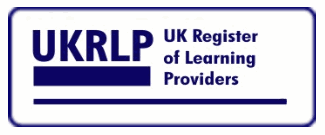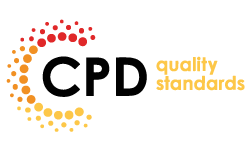
The insurance profession is one that comes with a great financial reward. The average salary of an insurance broker is approximately £37,953 per year in the UK. But one must acquire significant knowledge before choosing this career path. And here comes our article. In this article, we’ll discuss all you need to know about insurance, from types of insurance, how insurance works, the cost of insurance, filing insurance claims, insurance regulations, the future of insurance, insurance scams, insurance fraud, and many more. Let’s dive into the world of insurance!
What is Insurance: Protecting What Matters Most?
Insurance serves as a safeguard against potential financial losses. By paying a premium, one party agrees to compensate another party in the event of specific damages, losses, or injuries. This practice, known as insurance, functions to manage risks and protect against unforeseen losses or liabilities.
Types of Insurance
Insurance comes in many forms, tailored to meet specific needs and cover various risks. Now we’ll talk about some common types of insurance:
Health Insurance: Health insurance covers all medical expenses, including doctor visits, hospital stays, prescription medications, and surgeries. It ensures quality healthcare without incurring significant financial burdens for an individual.
Life Insurance: Life insurance is used to provide financial protection for loved ones in case of the policyholder’s death. It covers funeral expenses, replaces lost income, pays off debts, or funds long-term financial goals.
Auto Insurance: Generally, auto insurance protects vehicle owners against financial loss in case of accidents, thefts, or damages to their vehicles. It usually covers property damage, bodily injury liability, and personal injury protection.
Home Insurance: The main functionality of home insurance is to protect homeowners and renters against damage or loss caused by fire, theft, vandalism, or natural disasters. It covers personal belongings and provides liability coverage if someone is injured on the insured property as well.
Travel Insurance: Travel insurance offers coverage for unexpected events that may occur during a trip, such as trip cancellations, lost baggage, medical emergencies, or travel delays. It provides financial assistance and support when away from home.
Pet Insurance: Pet insurance is getting popular nowadays in developed countries, which helps cover veterinary expenses for pets in case of illness, accidents, or routine check-ups. Pet insurance ensures that pet owners can provide necessary medical care for their beloved companions without worrying about the cost.

How Insurance Works?
It’s very important to know how insurance works. Generally, insurance operates on the principle of risk pooling. When individuals purchase insurance policies, they pay premiums into a collective pool managed by the insurance company. The company uses these premiums to cover the costs of claims made by policyholders who experience covered events or losses.
Insurance companies use actuarial analysis to assess risks and set premiums accordingly. Actuaries analyse various factors such as age, health, driving history, location, and claims history to determine the likelihood of an event occurring and the potential costs associated with it. Based on this analysis, premiums are calculated to cover anticipated losses, administrative costs and generate a profit for the insurance company.
In the event of a covered loss or event, policyholders file claims with their insurance company. The insurance company then reviews the claim, assesses the validity, and, if approved, provides financial compensation according to the terms and conditions outlined in the insurance policy.

If you are a resident of the United Kingdom and eager to know specifically about how insurance works in the UK, then we have a solution for you. You can try our following course, where everything on UK insurance policies has been discussed briefly.
The Cost of Insurance
The cost of insurance varies depending on several factors. Let’s explore some key factors that influence insurance premiums:
Risk Factors: Insurance premiums are influenced by risk factors associated with the insured individual or property. For example, in auto insurance, factors like age, driving history, vehicle type, and location impact premiums. Similarly, in health insurance, factors like age, pre-existing conditions, and lifestyle choices can affect costs. In Studyhub we have a course on Risk Management, where topics like; analysing organisational risk, analysing financial risk, analysing operational risk minimising damages in difficult situations etc., have been covered in an organised manner. Industry experts have developed this course, and course materials are premium quality and up-to date-to provide the learners with the best learning experience.
Coverage Limits: The extent of coverage desired by the policyholder also impacts the cost of insurance. Higher coverage limits typically result in higher premiums.
Deductibles: Deductibles refer to the amount policyholders must pay out of pocket before the insurance coverage kicks in. Generally, higher deductibles lead to lower premiums, as the policyholder assumes a greater portion of the risk.
Claim History: Insurance companies consider the policyholder’s claim history when determining premiums. Individuals with a history of frequent claims or higher claim amounts may face higher premiums, as they are perceived as higher risks.
Insurance Provider: Different insurance companies have varying pricing models and risk assessments. It’s important to compare quotes from multiple providers to find the most competitive rates for the desired coverage.
Discounts and Bundling: Insurance companies often offer discounts for various reasons. For example, bundling multiple insurance policies (such as combining auto and home insurance) with the same provider can result in discounted rates. Additionally, maintaining a good driving record, installing security systems, or being a loyal customer may make individuals eligible for further discounts.

How to File an Insurance Claim?
Filing an insurance claim can seem like a daunting task, but understanding the process can simplify the experience. Here are the general steps to follow when filing an insurance claim:
Notify Your Insurance Company: Contact your insurance company as soon as possible after an incident or loss occurs. Most insurance policies have specific time limits for reporting claims, so prompt notification is essential. Provide all necessary details about the incident and be prepared to answer any questions the insurance company may have.
Document the Incident: Gather evidence and document the details of the incident or loss, which may include taking photographs, collecting receipts, obtaining police reports (if applicable), or gathering any other relevant information that supports your claim.
Complete Claim Forms: Your insurance company will provide you with the necessary claim forms, which need to be filled out accurately and provide all requested information. Be thorough and honest while describing the incident and the extent of the damage or loss.
Provide Supporting Documentation: Attach any supporting documents required by the insurance company, such as medical records, repair estimates, or invoices for damaged items. Note that these documents help validate your claim and expedite the process.
Cooperate with the Insurance Company: Respond promptly to any requests or inquiries from your insurance company. Only cooperating and providing the requested information in a timely manner can help ensure a smoother claims process.
Await Claim Resolution: Once the insurance company receives your claim, they will review it, assess the coverage, and determine the amount of compensation whether you are eligible to receive it or not. They may request additional information or send an adjuster to evaluate the damages.
Settlement and Resolution: If your claim is approved, the insurance company will provide you with a settlement offer. Review it carefully, and if you agree with the proposed amount, you can accept the settlement. If there are disagreements or concerns, immediately communicate with your insurance company to address them and seek a resolution.
It’s essential to familiarise yourself with your insurance policy and understand the specific claims process outlined by your insurance provider. Following these steps and maintaining open communication with your insurer can help facilitate a smoother claims experience.

Insurance Regulations
Insurance is a heavily regulated industry, and insurance regulations aim to protect consumers, ensure fair practices, and maintain the stability of the insurance market. Regulations can vary by country or region, but they generally focus on the following aspects:
Licensing and Financial Stability: Insurance companies must meet specific licensing requirements and demonstrate financial stability to operate legally. These requirements help protect policyholders by ensuring that insurers have the financial resources to fulfil their obligations.
Policyholder Protection: Regulations often mandate certain provisions and disclosures in insurance policies to ensure transparency and protect consumers. For example, policies must clearly outline coverage limits, exclusions, and claim procedures. Insurance companies must also provide timely and accurate information to policyholders regarding their coverage and any policy changes.
Pricing and Rate Regulation: Some jurisdictions have regulations in place to prevent unfair pricing practices and excessive rate increases. Regulatory bodies may review and approve insurance rates to ensure they are reasonable and act in the best interest of policyholders.
Claims Handling: Regulations govern how insurance companies handle claims, including timeframes for claim resolution, fair claims practices, and the establishment of appeals processes. These measures are in place to protect policyholders from unfair claim denials or delays.
- Consumer Complaint Resolution: Regulatory bodies often have mechanisms for handling consumer complaints against insurance companies. These processes provide an avenue for policyholders to seek recourse if they believe they have been treated unfairly or their claims have been mishandled.
- Solvency and Reserve Requirements: To safeguard policyholders and maintain stability in the insurance industry, regulations may require insurers to maintain sufficient reserves and adhere to solvency standards. These measures help ensure that insurance companies have the financial capacity to fulfill their obligations to policyholders.
- Anti-Fraud Measures: Insurance fraud is a significant concern, and regulations aim to combat fraudulent activities. Insurers are required to implement anti-fraud programs and cooperate with law enforcement agencies to detect and prevent fraud. Penalties for insurance fraud can be severe, including fines and criminal charges.

The Future of Insurance
The insurance industry is undergoing significant changes driven by technological advancements, evolving consumer needs, and shifting risk landscapes. Here are some key trends shaping the future of insurance:
Digital Transformation: Technology is revolutionising the insurance industry, enabling streamlined processes, improved customer experiences, and innovative products. Insurers leverage artificial intelligence, data analytics, and automation to enhance underwriting, claims processing, and risk assessment.
Usage-Based Insurance: Traditional insurance models give way to usage-based insurance (UBI), where premiums are based on actual usage or behaviour. Telematics devices in vehicles, for example, allow insurers to monitor driving patterns and offer personalised auto insurance rates. UBI promotes safer behaviours and provides more accurate pricing tailored to individual risk profiles.
Insurtech: The rise of insurtech startups is disrupting the insurance landscape. These companies leverage technology to offer innovative insurance products, improve customer experiences, and provide more accessible and affordable coverage. Insurtech innovations include on-demand insurance, peer-to-peer insurance, and digital insurance platforms.
Personalisation and Customisation: Consumers increasingly seek personalised insurance solutions that cater to their unique needs. Insurers embrace data analytics and AI to analyse individual risk profiles and offer tailored coverage options. Customisation allows policyholders to select specific coverage levels, endorsements, and deductibles to align with their preferences.
Cybersecurity Insurance: With the growing threat of cyber attacks, cybersecurity insurance is becoming essential for businesses and individuals. These policies provide coverage for financial losses, data breaches, and liability arising from cyber incidents. As the digital landscape expands, the demand for cybersecurity insurance is expected to rise.
Climate Change and Catastrophe Insurance: In recent days, climate change is increasing the frequency and severity of natural disasters, necessitating the development of specialised catastrophe insurance. Insurers are exploring innovative coverage options to protect against the financial impact of climate-related events, such as hurricanes, floods, and wildfires.
Ecosystem Partnerships: Insurers are forging partnerships with other industries to offer integrated solutions and enhance customer value. Collaborations with healthcare providers, technology companies, and automotive manufacturers enable insurers to provide bundled offerings and value-added services beyond traditional coverage.

Insurance Scams and Fraud
While insurance is a vital risk mitigation tool, it is also susceptible to scams and fraudulent activities. Insurance scams involve individuals or groups attempting to deceive insurers for personal gain. Here are some common types of insurance scams:
Staged Accidents: Fraudsters intentionally cause vehicle collisions to make fraudulent injury or property damage claims in staged accidents. They may involve multiple vehicles or innocent bystanders to make the accident appear genuine.
False Claims: Individuals may submit false or exaggerated claims, inflating the extent of damages or injuries to receive higher compensation than what is justified. This could involve providing falsified documents, forging medical records, or misrepresenting the circumstances of an incident.
Premium Fraud: Premium fraud occurs when individuals provide false information or conceal relevant details during the insurance application process to obtain lower premiums. This could involve misrepresenting driving records, understating risks, or providing incorrect information about the insured property.
Identity Theft: Insurance policies require personal information, and fraudsters may steal identities to purchase insurance policies using stolen credentials. They then file claims using the stolen identities, leaving innocent victims to deal with the consequences.
Arson and Property Damage: Arson is a deliberate act of setting fire to property to collect insurance proceeds. Fraudsters may also intentionally cause property damage, such as flooding or vandalism, to make fraudulent claims.
Health Insurance Fraud: Health insurance fraud encompasses a range of deceptive practices, including submitting false medical bills, billing for services not rendered, or providing unnecessary medical procedures to receive insurance payments.

Insurance Fraud Prevention
Insurance fraud affects insurers and drives up premiums for honest policyholders. To combat insurance scams and fraud, insurance companies and regulatory authorities take several preventive measures:
Fraud Detection Systems: Insurance companies employ advanced analytics and data mining techniques to identify patterns of fraudulent behaviour. These systems help detect inconsistencies, unusual claims, and potential red flags that warrant further investigation.
Education and Awareness: Insurers conduct awareness campaigns to educate policyholders about insurance fraud risks and how to identify potential scams. Providing clear information about the claims process and emphasising the consequences of fraudulent activities helps deter fraudulent behaviour.
Cooperation and Information Sharing: Insurers collaborate with law enforcement agencies, industry associations, and regulatory bodies to share information, investigate fraudulent activities, and prosecute offenders. This collective effort strengthens fraud detection and prevention measures.
Strict Claims Investigation: Insurance companies conduct thorough investigations of suspicious claims, verifying the authenticity of documents and seeking additional evidence when necessary. They work with specialised fraud investigators and adjusters to ensure claims are legitimate before approving payment.
Legal Consequences: Insurance fraud is a criminal offense, and perpetrators can face severe legal consequences, including fines and imprisonment. Penalties serve as a deterrent and reinforce the seriousness of insurance fraud.
By implementing robust anti-fraud measures, insurance companies strive to protect their honest policyholders, maintain the integrity of the insurance system, and ensure that funds are available to support legitimate claims.

Conclusion
In conclusion, insurance plays a critical role in protecting individuals, businesses, and assets from unexpected events. Understanding the different types of insurance, how insurance works, the cost factors involved, and the process of filing claims is essential for making informed decisions and maximising the benefits of insurance coverage. Moreover, staying vigilant against insurance scams and fraud helps maintain the integrity of the insurance industry, ensuring fair practices and financial protection for policyholders. As the insurance landscape continues to evolve, embracing technological advancements and adapting to changing risk landscapes will shape the future of insurance, offering more personalised solutions and innovative approaches to meet the evolving needs of consumers.

- All Courses
- IT & Software317
- Management263
- Teaching and Education229
- Business219
- Health and Fitness216
- Health & Safety155
- Engineering & Technology141
- Quality Licence Scheme136
- Health and Social Care128
- Healthcare123
- Accounting & Finance111
- Psychology96
- Lifestyle94
- Employability91
- Marketing75
- Office Productivity59
- Animal Care55
- Design and Photography48
- Beauty & Makeup43
- Design39
- Accounting & Bookkeeping32
- Web Development11
- Child Care8
- Construction7
- Agriculture5
- Environment1
Awarded By





0 responses on "Insurance: Definition, How It Works, and Main Types of Insurance Policies"